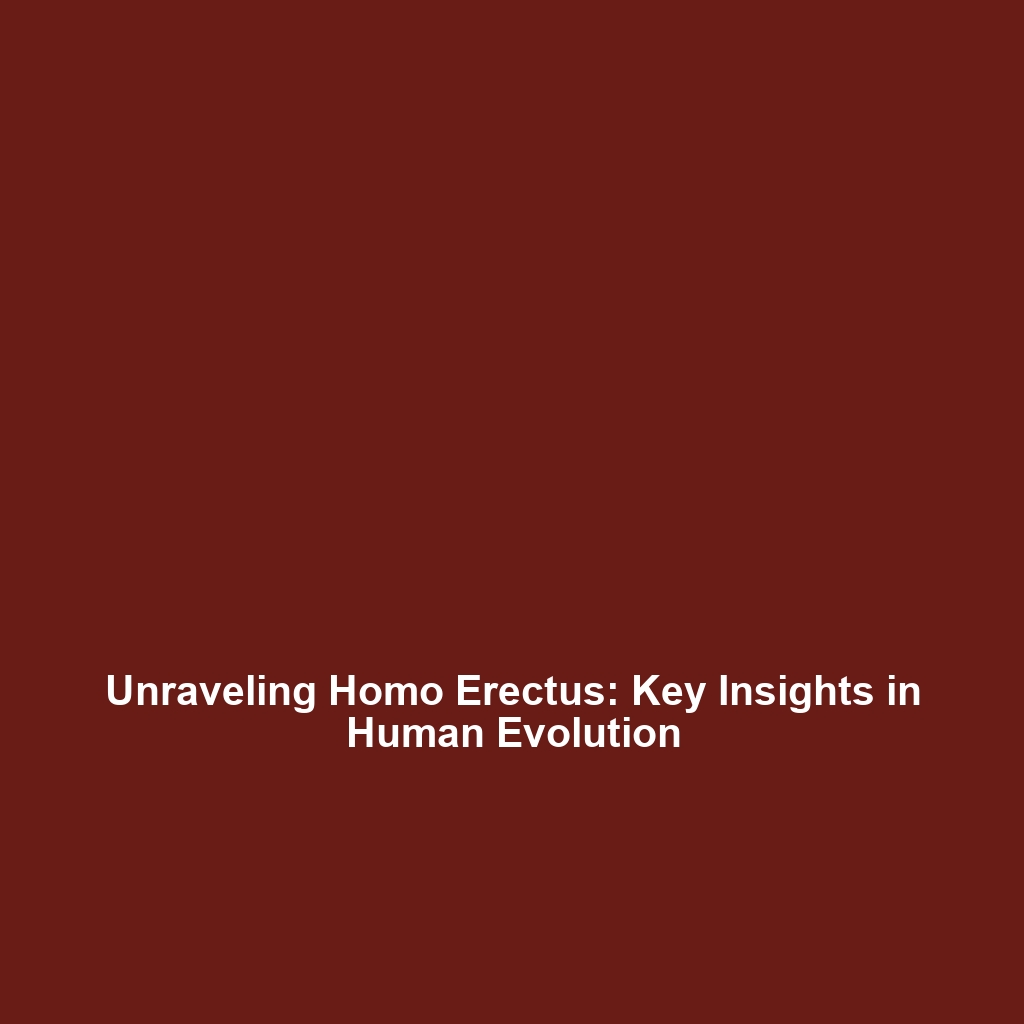Homo erectus: A Key Milestone in Human Evolution
Homo erectus, a pivotal species in the timeline of human evolution, emerged approximately 1.9 million years ago and is renowned for its striking anatomical similarities to modern humans. This species played a crucial role in our understanding of human ancestry, marking the transition from early hominins to more advanced forms. The analysis of Homo erectus sheds light on the evolutionary adaptations that shaped our lineage, making it an essential focus for scientists studying human evolution.
Key Concepts of Homo erectus
The importance of Homo erectus extends to various concepts within the realm of human evolution:
- Anatomical Features: Homo erectus exhibited a more human-like body structure, including elongated limbs and a smaller pelvis, suggesting bipedalism and adaptability to diverse environments.
- Tool Use: This species demonstrated advanced tool-making abilities, utilizing stone tools that reflected their cognitive skills and adaptability.
- Geographic Expansion: Fossils of Homo erectus have been found across Africa and into Asia, indicating a significant migration and adaptability to different habitats.
Applications and Real-World Uses
The study of Homo erectus has several applications in understanding human evolution:
- How Homo erectus informs anthropological studies: By examining the skeletal remains and artifacts attributed to this species, researchers gain insights into the evolutionary path of modern humans.
- Applications in genetics and anthropology: Genetic studies related to Homo erectus contribute to our understanding of human ancestry and interspecies relations.
Current Challenges
Despite its significance, the study of Homo erectus faces several challenges:
- Lack of complete fossil records complicates the understanding of anatomical variations.
- Debates regarding the classification of discovered fossils continue to pose challenges.
- Issues related to the interpretation of archaeological evidence may lead to biased conclusions.
Future Research and Innovations
Upcoming research into Homo erectus is poised to reshape our understanding of human evolution:
- Advancements in technology: Innovations in imaging techniques may provide clearer insights into the morphology of fossils.
- Genetic research breakthroughs: Future studies may reveal genetic links between Homo erectus and modern humans, offering new perspectives on evolutionary biology.
Conclusion
In summary, Homo erectus stands as a critical figure in the narrative of human evolution, embodying both anatomical and cultural advancements that paved the way for modern humans. Continued research will illuminate further details about this remarkable species and its role in our evolutionary story. To delve deeper into human evolution, explore other topics such as Neanderthals and Homo sapiens for a more comprehensive understanding.
